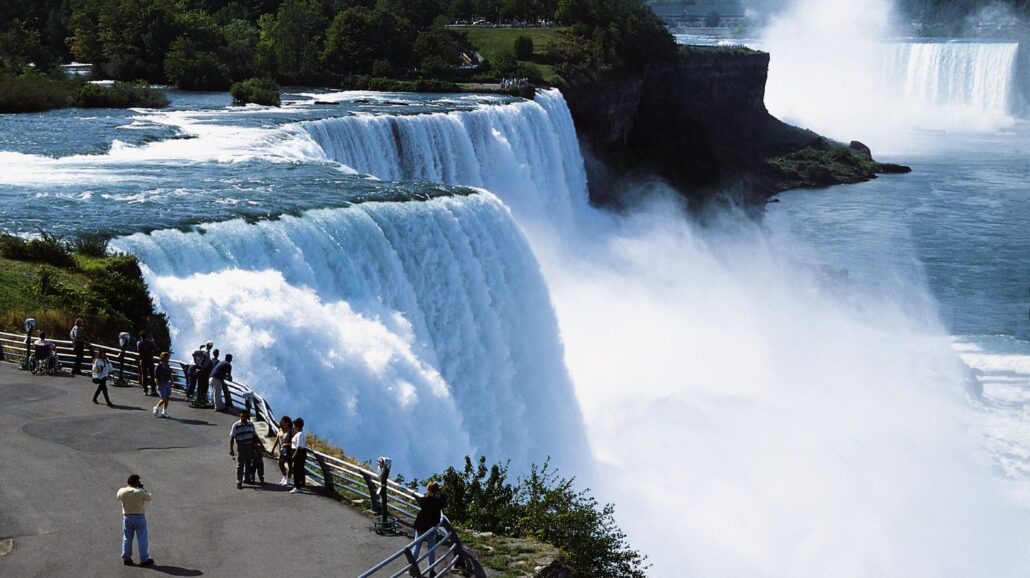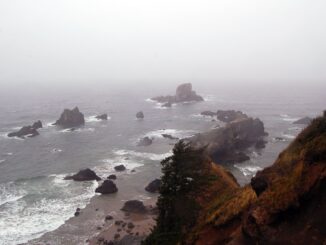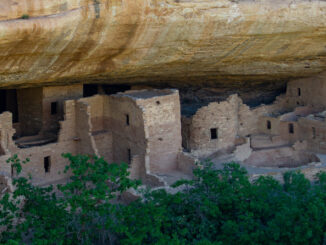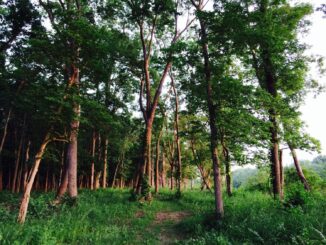
In 1885, the State of New York broke the mold by establishing the nation’s first state park.
Niagara Falls State Park was made possible by passionate philanthropists who understood that the treasure was worth protecting from industrialization, inviting the entire world to witness its splendor.
39 years later, New York went one step further by establishing the nation’s first government-led state park system. The office of New York State Parks, Recreation, and Historic Preservation came into being only 8 years after the US National Park Service was established.
This year, the Empire State has been busy celebrating this significant legacy. That celebration culminated this past weekend with a unique public lecture and a television special on the state’s public television network.
Lauren Eggleston, an environmental educator with New York State Parks, told an audience that the dream of setting aside lands for public enjoyment was born from a desire to fight against the tide of development.
“They were really trying to save things from industrialization,” Eggleston said. “ “Industrialization happens, and there’s a push to go back to nature,” she added. “And parks have always played a big role in this.”
A long, proud road
Though New York formalized its park system in 1924, the state traces the system’s roots much farther back.
Eggleston and the public television station WMHT both agree that the beginnings of the network can be traced back to the 1850s. That’s when the state organized to purchase Washington’s Upstate New York military headquarters from private hands.
Located in the town of Newburgh on the shores of the Hudson River, Washington’s Headquarters State Historic Site is a modest house from which General George Washington led the Continental Army in its campaign against British forces in the US Revolutionary War. Early preservationists were determined to save it for generations to come. It’s thanks to their vision that we can still explore the site today more than 174 years later.
The PBS documentary celebrating the 100th anniversary, titled “From Land to Legacy: 100 Years of NY State Parks,” called the state’s purchase of Washington’s Headquarters “America’s first significant conservation effort.”
William Krattinger, a New York parks historian, said the move marked the beginning of efforts in the United States to set aside lands and historic sites for public enjoyment.
“Washington’s Headquarters is remarkable because it’s the first publicly owned historic site in the United States,” he says in the documentary. “It’s the first time that a state purchases a property basically to preserve and commemorate it.”
Speaking at the Homer L. Dodge Lecture Series hosted by the Antique Boat Museum in Clayton, NY, Eggleston said the significance of the site cannot be understated. It only survived thanks to the efforts of the state’s earliest preservationists who understood the importance of historic conservation.
“George Washington and his staff were headquartered here during the Revolutionary War,” she said. “This is actually the location where he was stationed the longest and stayed the longest. He was there for 16 months.”
NY’s public lands push gains momentum
The state’s conservation push hardly ended there.
Eggleston recounted the entire history of America’s first state parks movement.
From 1850 to 1924, over 35 properties across New York were acquired by officials in Albany. She said things particularly took off after the Civil War in the mid-1860s. The Union victory compelled state leaders to consider what legacy they would like to leave behind for future generations.
The state parks movement was mainly led by New York’s most influential philanthropists. The state’s government took up their mantle.
The combined effort came to a head in the 1880s.
“The big thing that happened is Niagara Falls State Park is established in 1885,” Eggleston said.
Today, Niagara Falls is famous not only for the massive spectacle that its famed waterfalls produce but also for being America’s first state park. Niagara Falls State Park was established only a few years after the US federal government named the world’s first national park at Yellowstone in 1872.
“Niagara Falls is also the first park to be established by eminent domain,” Eggleston noted.
In the 1880s, the state acquired a handful of private estates in the St. Lawrence River valley and converted the properties into state parks.
Mary Island State Park was set up in 1894.
In 1900, the Palisades Interstate Park Commission was established by New York and New Jersey to preserve the Palisades, a rugged stretch of the Hudson River shoreline just across from Manhattan. Today outdoors enthusiasts can hike this oasis in the middle of an urban jungle from Fort Lee, NJ in the south to Tallman Mountain State Park, NY in the north. By 1910, Bear Mountain State Park and Harriman State Park were added to New York’s state parks portfolio.
A legacy for the nation
By the 1920s, the state became determined to set up a formalized, statewide plan for managing its growing network of protected areas. The New York State Parks office was born in 1924.
Today, millions enjoy the extensive system. New York is now home to over 200 state parks and state historic sites.
The network provides recreation for state residents and visitors and employment for New Yorkers across the state. New York is hosting 100th anniversary events at dozens of state parks in the network. Explorers are also invited to download a special smartphone app developed for the commemorative year.
Gabriella Cebada Mora, Director of the Division of Environment at New York’s state parks office, says in the special documentary that there are lessons for everyone in New York’s early efforts and public lands preservation.
Given the enormous stress modern society places on the environment, conserving as much that’s left of nature as possible is more important than ever.
“The challenges that are faced by the environment aren’t unique to New York,” she says. “It’s definitely a global issue.”
©2025 Public Parks



